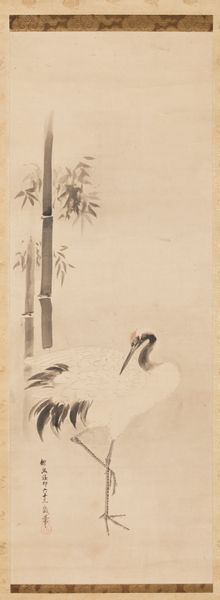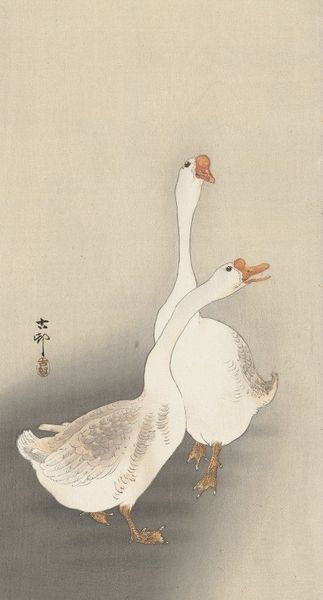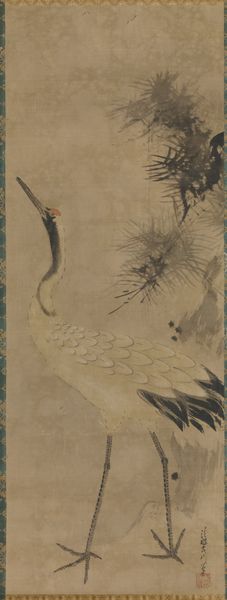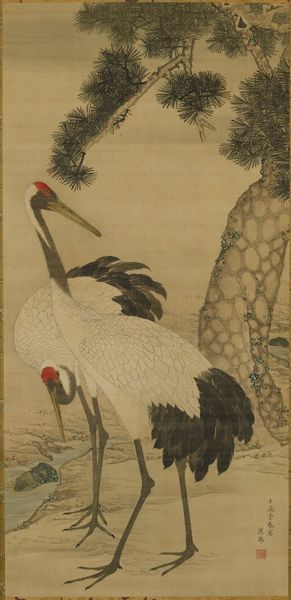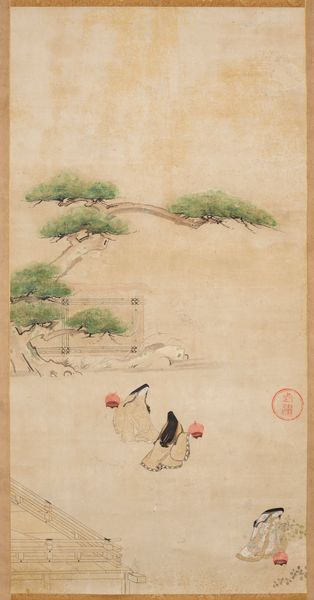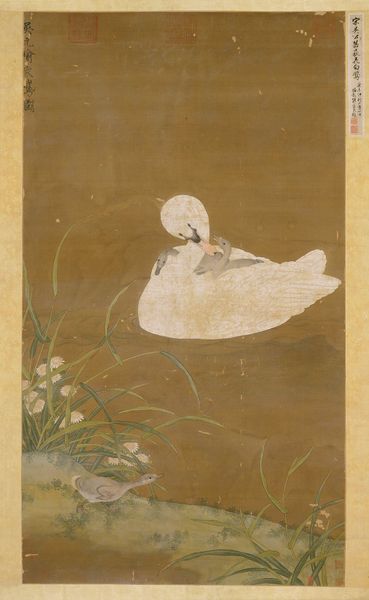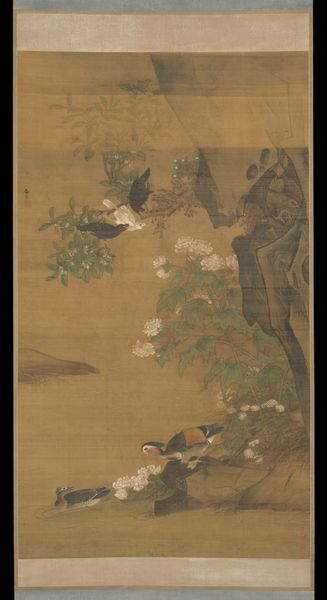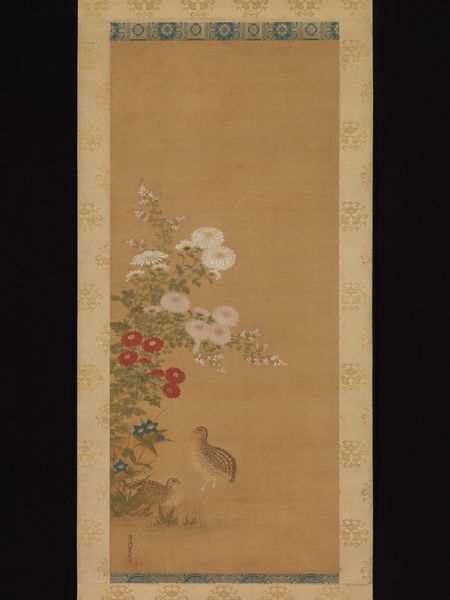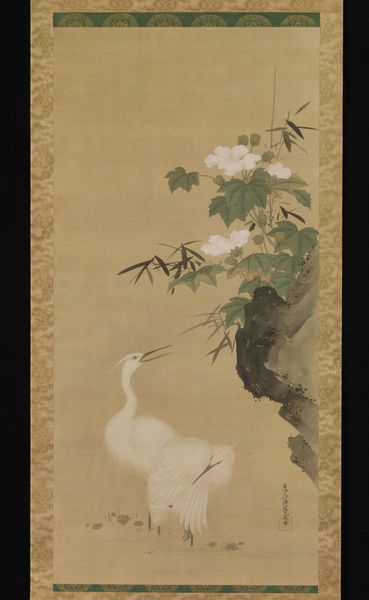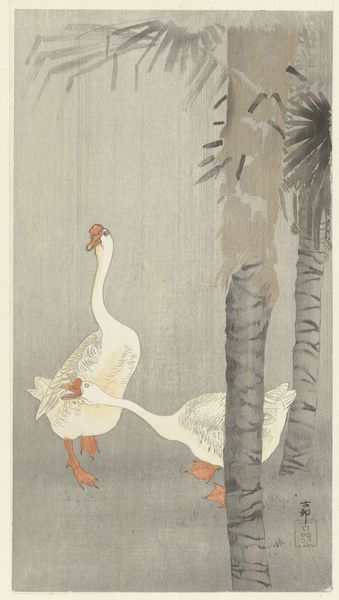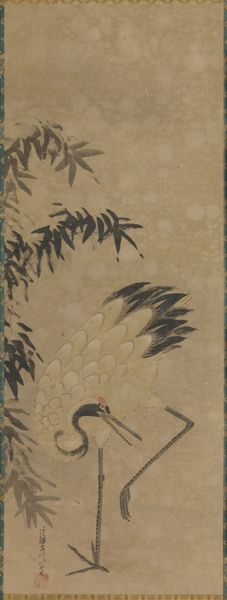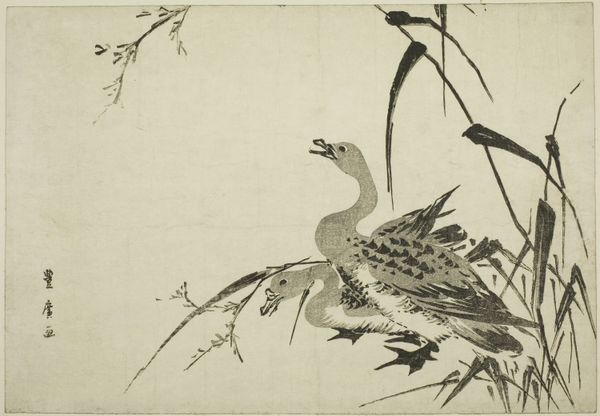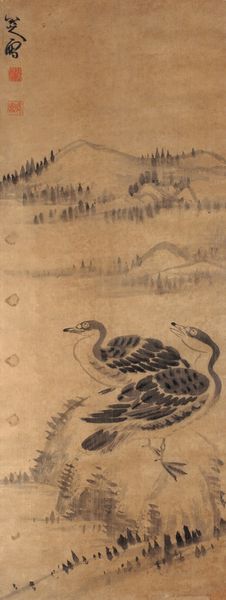
Dimensions: 62 x 35 1/2 in. (157.48 x 90.17 cm)
Copyright: Public Domain
Curator: This painting, aptly named "Swan and Cygnets," dates from around the 15th century. Created with ink and watercolor, this work belongs to the Yamato-e tradition and is currently housed here at the Minneapolis Institute of Art. Editor: It possesses a delicate, serene quality. The muted colors and the overall composition create a sense of stillness. I am drawn to how the white of the swan stands out against the darker background, becoming an icon in the natural surrounding. Curator: Absolutely. If we situate this within the cultural moment from which it comes, these themes point to specific aristocratic interests. Consider, for example, that during this time in Japan, images like this were made for elites and often acted as symbolic carriers of imperial values, especially family and lineage. Editor: That familial element resonates. Birds appear repeatedly as dynastic symbols across cultures, and one finds swans, specifically, representing purity and grace—sometimes tied to mythological goddesses, sometimes just expressions of natural perfection, or *anemos*. I'm reminded of the enduring fascination humans have with idealized family structures. Curator: Fascinating point. Beyond the overarching themes, the detailed execution deserves attention. Note how the anonymous artist has managed to capture the texture of the feathers. What cultural or social statements can you say that type of meticulous work might underscore? Editor: I see that artistic investment of time and attention speaking volumes about a prevailing belief in perfection. It's like offering up proof through craft, that even a humble swan family participates in something divine. Are we meant to contemplate our roles through it, the maternal bond perhaps? Curator: Well, if we follow that a bit further, consider that ideas about gender, particularly motherhood, were rigidly prescribed during this era, serving to consolidate class hierarchies. Motherhood, and especially maternal care, were held up as evidence of feminine virtue in ways that had very material effects on Japanese society. Editor: Thanks, that puts a sharper, less sentimental edge on the scene for me, while simultaneously highlighting the way symbols function intertextually through various systems of knowledge. That said, even realizing what interests underpin such imagery, it's still rather sweet! Curator: It’s been enlightening to consider how a seemingly simple nature scene is loaded with such social significance. Editor: Indeed. "Swan and Cygnets" gives us so much to think about regarding both the natural world and its place within cultural and social landscapes.
Comments
minneapolisinstituteofart almost 2 years ago
⋮
This painting is typical of professional flower-and-bird paintings of the early Ming period in its clear reference to older Song dynasty styles. With the overthrow of the Mongols in 1368 and the restoration of native rule, the tendency to emulate the highly accomplished art forms of the pre-Mongol era was quite pronounced. Wu Yuanyu, whose apocryphal name appears on this scroll, was a military officer in the Song courts of Emperor Shenzong (reigned 1068-1085) and Zhezong (reigned 1086-1094). He worked in the academy of painting and this portrayal of a swan and its cygnets, which forms a pair with a painting of the same subject matter, typifies the so-called Song academic style. Even though it was painted well after the time of Wu Yuanyu, it accurately captures the likeness and spirit of the earlier style.
Join the conversation
Join millions of artists and users on Artera today and experience the ultimate creative platform.
